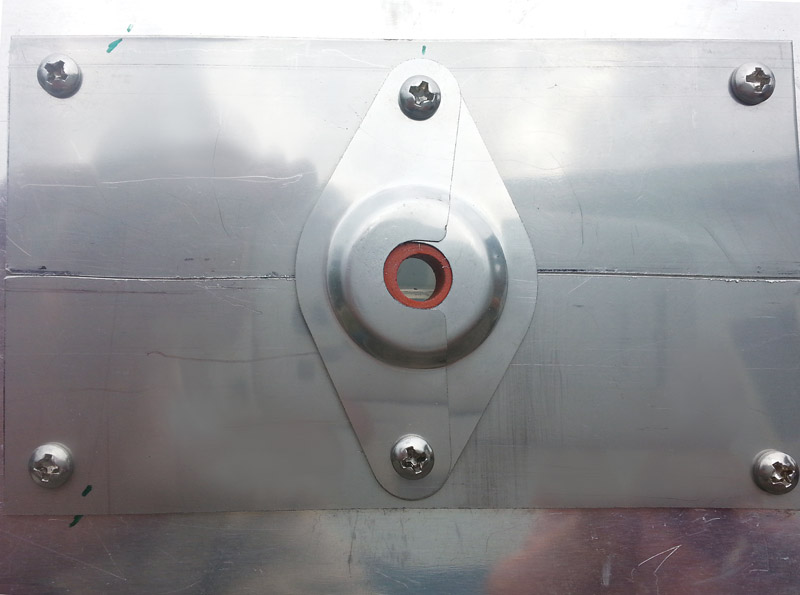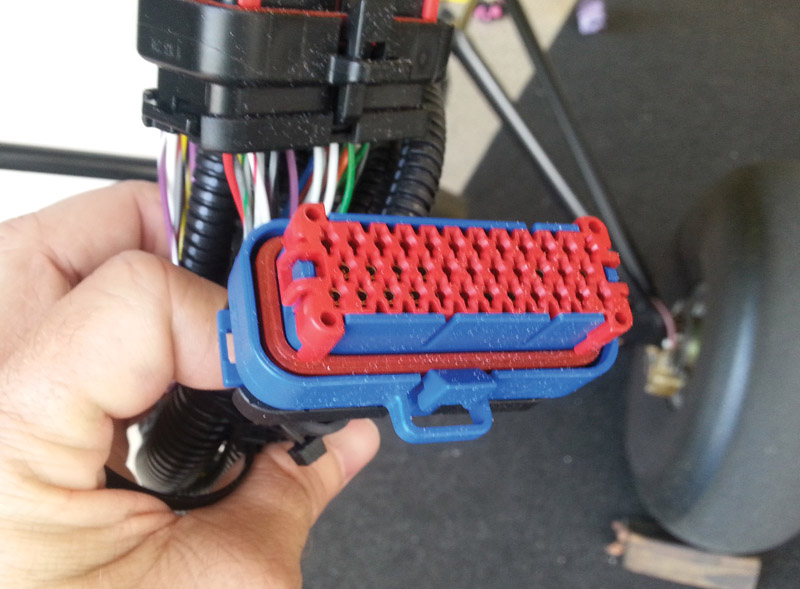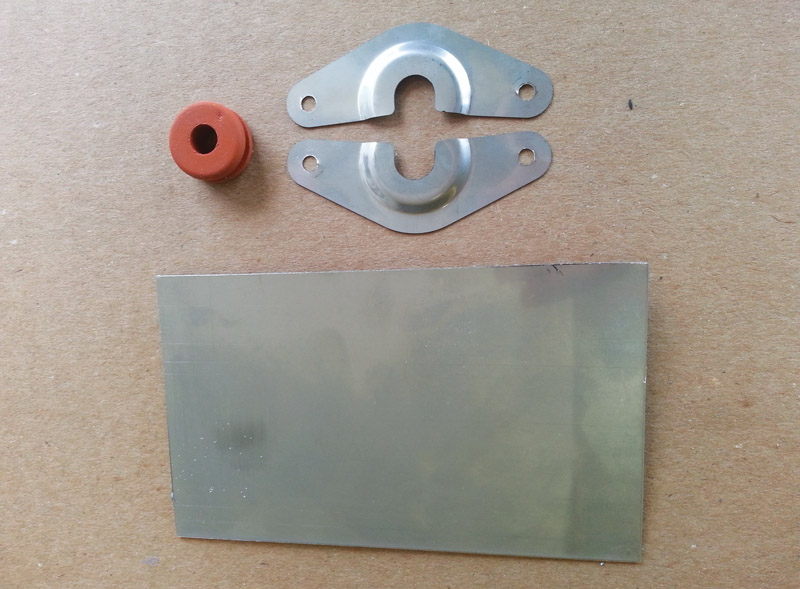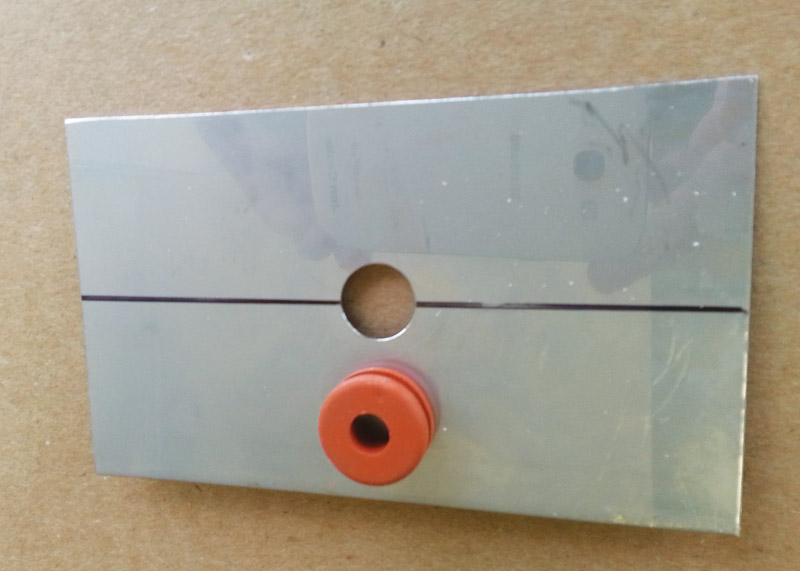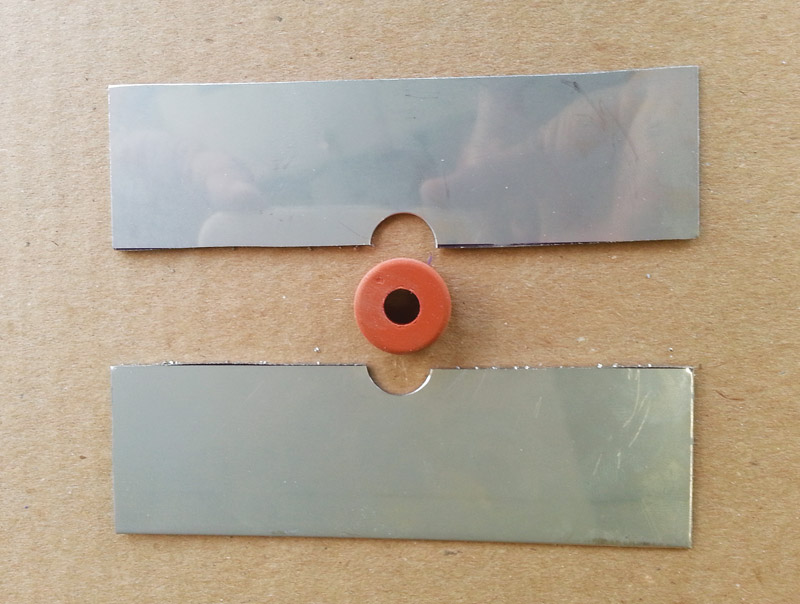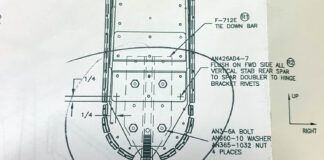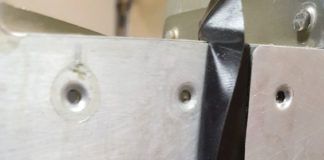Completed firewall protection hiding the hole that was cut for the large plug. The parts are mounted to the forward side of the firewall.
Each time we penetrate our aircraft’s firewall—for example, when we make a hole for a control or electric cable—we must be mindful to properly seal the breach to keep fumes from entering the aircraft cabin. The dangers include carbon monoxide from exhaust and smoke from an engine fire. Also, the integrity of the firewall from the standpoint of shielding an engine fire should not be compromised by the process of creating these holes.
Large plug for an engine computer that needs to be routed from the engine side of the firewall into the cabin.
Some of the modern electronic fuel-injected aircraft engines use cables with large plugs that need to be routed from the engine side of the firewall into the cabin, where they are connected to their control computer. Getting that large plug into the cabin requires that we cut a rather large, sometimes irregular, opening in the firewall. We are then left with a hole that is now too big for the remaining cable attached to this plug. The method shown in these pictures allows any size breach in the firewall to be reduced to the desired small opening that preserves the firewall’s protection from fire and fumes.
Three inexpensive parts are needed for the project: a small piece of stainless steel sheet, a silicone grommet, and a two-piece stainless steel firewall shield.
The three components needed for this project are shown here:
- A piece of stainless steel sheet sized a bit larger than the hole you want to cover. A thickness of .030-inch or a bit thinner is suitable.
- A grommet (preferably silicone in composition for good heat durability) sized according to the wire cable that will be routed through it.
- A stainless steel, two-piece firewall shield with a hole size just larger than the grommet’s inner diameter. These are dimpled to provide space for the grommet, and the exact hole size is obtained by reaming the closest smaller size hole available. These inexpensive shields are available from your favorite aircraft supply store.
The beauty of this method is that we can install all three components after the cable is routed through the large opening of the firewall.
The process starts by drilling an appropriate sized hole in the center of our stainless steel sheet. The hole diameter should be large enough to accept the grommet we have chosen. Next, we need to cut this sheet in half through the center of the hole. Thin stainless sheet is not too hard to cut; a fine-tooth band saw or saber saw works fine. Take your time! Hand shears work but do not leave a super nice edge.
After drilling a hole for the grommet, draw a line and cut the stainless steel sheet into two pieces.
These sheet halves can now be mounted to the forward side of the firewall surrounding the cable. Use stainless rivets or bolts as desired. The grommet needs a small cut so that it can also be installed onto the cable and then inserted into the hole of the stainless steel sheet.
Both firewall shield halves are placed over the grommet and attached with stainless rivets or bolts. When properly positioned, the opening in the assembled shield should be just a bit bigger than the grommet opening so that there is no contact with the cable. The grommet takes care of protecting the cable from abrasion; the shield protects the grommet from fire.
The last step is to add some high-temperature silicone caulk to the exit area of the cable so as to really make an airtight seal. Some builders add this caulk to the area between the stainless metal plate and firewall for more protection against fumes leakage.
Grommet and stainless steel sheet after cutting. The parts can be installed with the cable in place in the grommet.
You now have an inexpensive, professional looking firewall seal that can be adapted for any size hole and can be serviced in the future (i.e., disassembled if you ever need to remove that cable and plug someday). Since all of these components are made of stainless steel, you are making the best effort to maintain the fire rating of your firewall.

